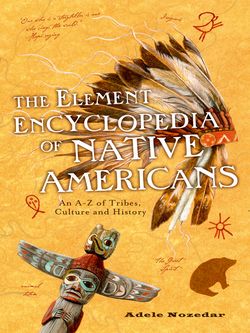Читать книгу The Element Encyclopedia of Native Americans: An A to Z of Tribes, Culture, and History - Adele Nozedar - Страница 18
ALLOTMENT ACT
ОглавлениеThis is also known as The Dawes Act, after Senator Henry Dawes of Massachusetts, who was its main proponent. Passed in 1887, the Act gave the President of the United States the right to audit all the lands that belonged to the Native American peoples, and then, where necessary, divide that land into smaller pieces for individual tribes. The overarching aim of the Act was to aid the assimilation of Native Americans into the white majority; individual ownership of land was perceived to be of paramount importance in facilitating this aim. The European sensibility placed a lot of importance on land and property ownership, while this was not a primary concern of the Native peoples, who believed that the land belonged to everyone. As well as apportioning parcels of land, the Act enabled the Government to buy any “excess” land from the Native Americans, and then apportion that land to others—primarily, white settlers.
Dawes was very much of the mind that ownership of land would have a “civilizing” effect on the Native Americans. In order to be civilized, he said, a man had to:
“… wear civilized clothes … cultivate the ground, live in houses, ride in Studebaker wagons, send children to school, drink whiskey and own property …”
The key points of the Act were as follows:
The head of a family would be allotted 160 acres; an orphan or a single person under the age of 18 would receive 80 acres; and anyone else under the age of 18 would receive 40 acres.
These allotted chunks of land would be held in trust by the U.S. Government for 25 years.
Native Americans could choose their own land, and had four years to do so. If they still had not made a decision after this time, then they would have to take what they were given.
Further, any Native American who had received land and who had subsequently “adopted the habits of a civilized life” would be made a citizen of the United States.
Excluded from the Act at the time it was passed were the Cherokee, Creek, Choctaw, Chickasaw, Seminole, Miami, and Peopria, who were living in the Indian Territory, also the Osage, Sauk and Fox in the Oklahoma Territory, and any of the Seneca in New York.
The Act was not universally admired by any means, certainly not by the Native Americans whose traditional way of living, sharing the land and its bounty, was completely ignored. It was also looked upon with a great deal of suspicion and cynicism by many of European descent. Senator Henry M. Teller of Colorado spoke for many when he said that the real purpose of the Allotment policy was:
“… to despoil the Indians of their lands and to make them vagabonds on the face of the earth …”
Teller also pointed out that:
“… The provisions for the apparent benefit of the Indians are but the pretext to get at his lands and occupy them … If this were done in the name of Greed, it would be bad enough; but to do it in the name of Humanity … is infinitely worse …”
Teller was proved right. The amount of land given to individuals was not sufficient for them to subsist in the ways that they had done for generations, and effectively saw the end of the traditional way of hunting. It also forced the Native Americans to become farmers instead. A further complication came about in that, if the owner of the land died, the allotment could be divided into even smaller chunks by his heirs. After 25 years the Native had the right to sell the land, and the result was that much of it was bought by white settlers for bargain-basement prices. It was also sold to the railroad companies and other major organizations, as Teller had predicted.
The amount of land originally owned by Native Americans was estimated at some 150,000,000 acres; fewer than 15 years after the Act, in 1900, this had been reduced to 78,000,000 acres.
The Allotment Act was abolished in 1934, as no longer deemed necessary.
